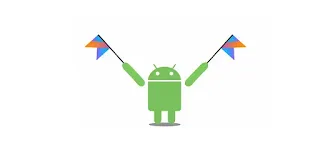18. Kotlin Fundamentals for Android - Parcelable vs Serializable
🚀 Kotlin Fundamentals for Android: Parcelable vs Serializable - Deep Dive
Welcome, Android developers! In the world of Android app development, efficiently passing data between components is crucial. Today, we'll explore two fundamental interfaces for object serialization: Parcelable and Serializable in Kotlin.
📌 Understanding Object Serialization
Serialization is the process of converting an object into a format that can be easily stored or transmitted. In Android, two primary approaches exist: Serializable (Java standard) and Parcelable (Android-specific).
🔍 Serializable: The Java Standard
data class User(
val name: String,
val age: Int
) : Serializable
🚀 Parcelable: Android's Optimized Solution
@Parcelize
data class User(
val name: String,
val age: Int
) : Parcelable
🔬 Performance Comparison
Parcelable is significantly faster than Serializable. The @Parcelize annotation in Kotlin simplifies implementation, generating boilerplate code automatically.
💡 When to Use Each Approach
- Passing data between Android components
- Intent extras
- Bundle operations
- High-performance data transfer
- Simple data storage
- Caching objects
- Network transmission
- Less performance-critical scenarios
🏋️ Practical Exercises
⚠️ Common Pitfalls
🎉 Conclusion
Understanding Parcelable and Serializable is crucial for Android developers. While both serve serialization purposes, Parcelable offers superior performance and is tailored for Android's ecosystem.
📱 Stay Updated with Android Tips!
Join our Telegram channel for exclusive content, useful tips, and the latest Android updates!
👉 Join Our Telegram ChannelGet daily updates and be part of our growing Android community!


Comments
Post a Comment